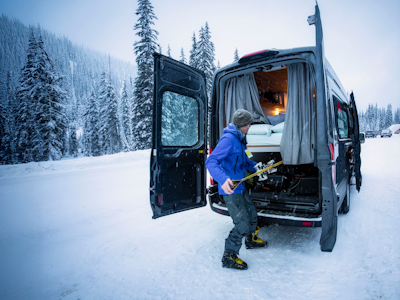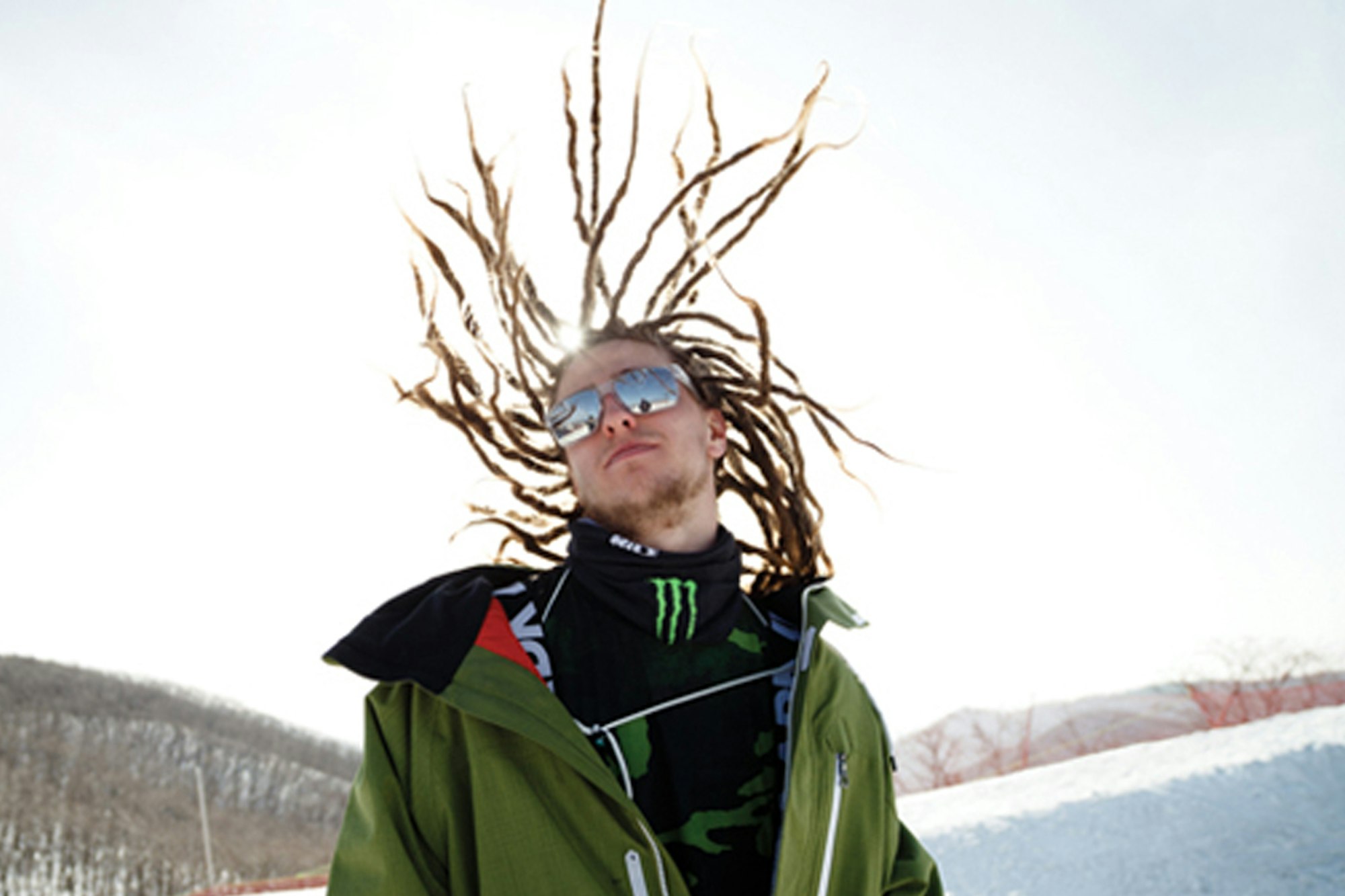[juicebox gallery_id=”74″]
Henrik Harlaut is from Sweden. He is a professional skier and the Skier of the Year, according to the voters. And yet he is not an athlete, at least in any conventional sense of the word. As I flew over the Nevada desert in a narrow seat just forward of the lavatory, my hands were already full with the near impossible task of amending public misperception of the X Games champion with what I know as the truth—that there is much more to Henrik Harlaut than that public veneer. His Olympic bid will be a sideshow to the main act, the story of a 22-year-old kid who has changed the sport of skiing forever.
“The biggest little city in the world,” exclaimed a bearded man with a Realtree camo cap as the plane circled in to land. With some effort, he tore his eyes from the spread of casino lights below and pointed enthusiastically to his buddy across the aisle like a third string quarterback might point to a rookie receiver who just pulled down a Hail Mary with five seconds left in the fourth. People jostled for position when the seatbelt chime sounded. I avoided eye contact with the meth-faced soldiers of fortune at the slot poker machines as we exited through the lobby. Someone had puked in one of the drinking fountains. Reno.
The kid at the rental car counter was intrigued at the prospect of my trip. “Going to Mammoth, huh,” he said. “You a snowboarder? I figured you were either a snowboarder or you were in a band when I saw the long hair.”
“I’m a skier. I’m going down there to write a story about the Olympics.”
He smiled knowingly, wise to my game. “So it’s about Shaun White then.”
“Afraid not,” I said. “No one cares about that ginger prick anymore. It’s a profile piece on Henrik Harlaut.”
“Never heard of him.”
“You will. In a couple of months, he’ll be bigger than the Flying Tomato and Tony Hawk. Combined.” Then, with an air of importance befitting the conferral of insider information, I snatched the keys from the counter and walked off.
Truth be told, I’ve never had much use for the ready-made drama of the Olympiad and its contrived Cinderella stories. The Olympic debut of slopestyle and halfpipe skiing is just something for old people to talk about at dinner parties and bridge games. The sport of freeskiing that I know and love will surely be misunderstood by such water cooler enthusiasts. Like most aesthetic pursuits that fall under the banner of “action sport,” it is something beyond the American general public’s understanding.
Racing at 90 mph through the dark of the high desert in an uninsured Chevy, my mind wandered to a summer not long ago (although four or five years amounts to an epoch in the scope of freeskiing’s young history) when I lived with Henrik and ten other skiers in a Mount Hood ski chalet off Highway 26 in Oregon. At night the sound of engine-braking Peterbilts rattled through the window screens in a way particular to big trucks in a misty corridor of tall trees. Long after everyone had gone to bed, you could hear Henrik laughing softly from his mattress in the loft.
“…strangers invariably gawked at the cornrowed Swedish hobbit…”
He was watching an animated musical called A Goofy Movie on his laptop, practicing his “Henglish.” The most fascinating thing about the then 17-year-old Swede, besides his obvious ski talent, was his creative use of English diction. He was always adding and dropping h’s and s’s. His favorite movie was about a kid wizard named “’Arry Potters.” His Hollywood crush: “Hemma Watson.” Aloe vera was pronounced “AOL.” Milwaukee: the remote principality of “Milky Way.” “I always confuse dem Teenage Turtles with the Three Mosquitos,” he said one day. He meant Musketeers. About the only English verbiage he had a good handle on in those days was Wu-Tang lyrics.
Everyone in that house loved him. Henrik was our little “brudder;” we, his surrogate family. He had a special moniker and secret handshake for each of us. Several times, I drove him all the way to Sandy at 10 p.m. so he could get Taco Bell when he ran out of Goetze’s caramels and Fruit Loops. After skiing on the glacier, he would clunk around the grocery store in ski boots, where strangers invariably gawked at the cornrowed Swedish hobbit with a dirty tall tee and chrome grille.
Henrik paid no mind. Coming of age in Åre, Sweden, he had learned the hard way that people tend to espouse a fairly narrow view of skiing. Sweden has a storied history of alpine and nordic ski champions. To this day, snowboarding is often snubbed by the conservative element as “hashplanka” or “stoner board.” Åre local Jon Olsson had helped pave the way for a nascent generation of cookie-cutter freeskiers, but Henrik hardly fit the mold. Where, if at all, young Henrik fit into Scandinavian snow sports culture is hard to say. He hadn’t postured himself a Jon Olsson type but a Tanner Hall or Mickael Deschenaux. A gangster on snow.
The swaggy hubris reflected in Henrik’s skiing in 2009 was largely at odds with the person himself—an introverted and exceedingly humble kid who said, “No, you,” at the slightest suggestion of a compliment. Even his malapropism-laden lexicon was just a clever act, a diversion tactic that allowed him to do what he did best. Sit back in the cut, watching, listening. Learning.
One night that summer, I borrowed his computer to check my email. Before I typed my password, I felt a tap on my shoulder, and Henrik politely asked if he might hazard a guess as to what it was. His face pinched at the corners as he smiled slyly through two prominent rows of white teeth. “Is it Dynastar?” he whispered. It was.
I hadn’t skied for Dynastar in four years, but Henrik didn’t bother to guess any of my current sponsors. Only my first. He knew too well the things that the skier holds close to the heart. If skiing were writing, Henrik would be JD Salinger. If it were a guitar, he’d be Hendrix or Page. Skiing, for Henrik, is a thing that simply makes sense—a force that flows through him like some divine whim. Henrik’s skiing is a symphony that he was born to compose, an opus that the whole world will soon watch with bated breath.
360. Mt. Hood, OR. Shot by Drew Smalley.
I rolled into town and found it much the same as ever. Mammoth is a desert isle where great skiers are born and where washed up pros wander off to die. The same is probably true, in one way or another, of any place that is too good to be true, if only because it is three hours from anywhere.
I went straight to Lakanuki, the village tiki bar that is both the bane and saving grace of Mammoth nightlife. It was Thanksgiving week and outside, the line was forty head deep. The LA weekend warrior constituency, dressed in tight black denim and leather jackets, had beaten the locals to the punch. Henrik and Phil Casabon showed up as planned, joining the dissenting crowd outside the door. “Blunt, though,” Henrik said as our palms met. “Yessir, Blunt,” I responded in kind. It is our mutual nickname, dating back to the days of that house in Hood, denoting a shared proclivity for grabbing the tail of the ski.
Casabon and Henrik poked each other in the ribs as we waited. “Got you,” Phil said after thirty seconds of trying to break through Henrik’s defense. “No, B, them ribs are here,” Henrik contested, pointing to a spot just above his hip. “He never admits it when he got got,” Phil explained, but it is rare to see them in any kind of competition, regardless of how petty.
There is a strange kinship between the eponymous heroes of the B&E (B-Dog and E-Dollo) Show. A few years back, in a power move that took some real sand, they split from Level 1 Productions to pursue their own vision with a series of web edits under Tanner Hall’s Inspired label. The barn-burning success of the B&E Show came as no surprise. Between the two of them, they have invented or popularized almost half the tricks that kids are doing these days.
It was neither surprise nor coincidence that they used Wu-Tang in almost every one of their early edits. Besides the vertically integrated production of the B&E Show (rider filmed, edited and inspired—pardon the pun) an even deeper synthesis exists with the ideals of RZA’s hip-hop syndicate. Wu-Tang was the first hip-hop group to treat rap as a martial art—a melding of philosophy and its physical manifestation, classic form and spontaneous creation. B and E have treated skiing the same way, borrowing from the ski style masters who came before them to create a brand of skiing that looks and feels like a completely different sport.
As we finally passed through the stone façade and into the bar, snowboarders in Red Bull hats and pretty girls popped out of the woodwork in droves to give Henrik daps. “Whatup Dollo!” they all said. He meekly rejected their advances with a smile and a nod. It was the same Henrik
as ever but somehow more comfortable in his own skin. Even after our numbers had grown to ten, including Hornbeck, P-White, the whole cast of the Traveling Circus, Paul Bergeron and Vincent Gagnier, Henrik was the only one that anyone recognized.
These were not fans of Phil Casabon or the B&E Show. These were not even fans of skiing. They were fans of Henrik. We were the rest of the Rat Pack, and he was Frank Sinatra. The cornrows and grill of old had been replaced with dreadlocks, his stained tall tee had been exchanged for a clean one, but little else had changed. He had become the most iconic two-planker since Glen Plake. And it had happened overnight. The source of his fame, I knew, was the fabled nose-butter triple cork of the 2013 X Games.
It was a trick that had single-handedly put Henrik, and freeskiing, on the map. A crowd-pleasing maneuver may not have been his preferred methodology, but it was what we had needed. I remembered the tall tale that I had fed the kid at the Alamo car rental counter. At the time, it had seemed like a great joke to think that Henrik Harlaut could ever be a household name like Shaun White, but just five hours later, I was beginning to wonder.
A group of girls attempted to steal Henrik after last call, but he came jogging back up the street with a rueful smile. “No YOLO Dollo?” Phil joked, a phrase that referred to Henrik’s occasional après-ski dalliances with admirers of the female persuasion. “Not tonight,” Henrik said, “gotta hang with Blunt, Wrecka, and Shark Ducks.”
I had decided to leave the rental car in the lot, and the four of us made the slippery trek back to the condo that B and E shared with Bergeron and the brothers Gagnier. We stayed up until the glow of dawn came through the sliding door, rapping about skiing. Henrik volunteered to sleep on the floor. The Swedish team had a suite reserved for him at the Mammoth Inn, but he preferred to be with his people.
Åre, Sweden. Shot by Daniel Rönnbäck.
Hungover in the lift line. Someone behind us was yelling, “Henrik! Henrik Harlaut!” I turned around to see a 50-year-old man in the kind of baize lumberjack pants that racers used to wear over their GS suits back in the 90s. I don’t know whether I was more surprised by the man’s age or the fact that someone had called Henrik by a name other than Dollo.
“I was wondering if you’d gotten Skier of the Year,” the man said, as his kid tried to hide behind him in shame. “Are the results in?”
“Not sure,” Henrik replied. “I think they’re still voting,” but then he looked at me knowingly and quickly flashed that old familiar smile. He had somehow figured out that the reason I had come to Mammoth to write the Freeskier story was that he had already won Skier of the Year. “Well I voted for ya,” the man said. “Good luck in the Olympics. Hope you win,” winking, “even if you’re not from the US of A.”
It was off-putting. Here was a grown man fan from a very different subset of skiing. Could he really grasp what Henrik was about? Or had he simply regurgitated something that his kid had told him? The man’s bandwagon enthusiasm was a reminder of the fickle popularity of any niche sport; the reality that the staying power of freeskiing as an Olympic event has yet to be determined, yet to be weighed against perennial favorites like downhill racing.
Since Jonny Moseley’s meteoric rise to stardom after the ’98 Nagano Games, the sport of mogul skiing has become all but extinct. Moseley has hung around, if only as a B-list celebrity and reality TV host. As far as the general public is concerned, he is surely better known as a TV personality than a gold medalist in a discipline that, in its heyday, was at the forefront of the Olympic program.
While Moseley’s then avant-garde approach to mogul and park skiing will always have a special place in my heart, the fact that he was even considered to announce the freeskiing events in Sochi begs the question: can Moseley even know the first thing about the sport he helped create as it is today? In fifteen years, freeskiing has made the leap from a Cro-Magnon huckfest to a nuanced system of styles and influences, indexed according to the dogmatic whims of its various sects. That gap in time and development is akin to the space between Rodney Mullen’s invention of the kickflip and Nyjah Huston doing a front blunt on a 20-stair handrail.
In the ever-changing world of action sport, only those equipped to adapt will survive. Only the youth are upwardly-mobile, and even they should be apprised of their expendability. I fear an age where freeskiers will have become aging ex-Olympians that revel in the faded glories of a dead sport—a freestyle discipline that was approved, sanctioned, judged, and finally killed at the hands of the IOC.
Yet, as I watched Henrik tear through Mammoth’s park that first day, I realized that the Olympic debate is moot. The global stage and the bureaucratic restrictions that come with it will not make or break freeskiing. It sounds trite, but as long as people are still having fun on skis, nothing else matters. Freeskiing, for those who know its true essence, is an art form.
“Henrik’s skiing is a symphony that he was born to compose, an opus that the whole world will soon watch with bated breath.”
I spent the next few days skiing and drinking with the boys. I had passed every waking moment with Henrik, but he had been noncommittal when it came to my questions about the Olympics. The only thing that he’d told me so far was that he was pleased with the suit that the Swedish team had tailored for him. “It’s 4XL,” he’d told me proudly. “Maybe even a li’l bigger than my Armada gear.”
It wasn’t until my third and final night in Mammoth that the necessity of a formal interview began to weigh upon my conscience. I was playing chess with Casabon, laughing at Vinnie Gagnier and Henrik as they analyzed video of the 2006 US Freeskiing Open Big Air that one of them had dug up in some musty corner of the Internet.
“Here comes Clarke. Oh no, it’s Hathaway. Same suit, doe,” Henrik said before the skier’s name popped onto the screen. Vinnie has a similar command of the microfiche of ski history. Both can spontaneously produce a name, landmark moment or particular date from the dustiest tomes of the past. Listening to these two talk about freeskiing was like attending an epistemological debate between Chomsky and Foucault about the origins of social dissent. Any attempt to contribute on my part would have been an exercise in futility.
Phil had beaten me handily in chess. Twice. I won the third game by baiting B-Dog with a sacrificial knight. “Nice playing with you as always, monsieur,” Casabon said softly as we shook hands. “We are two and two, all time now,” he added, recalling a game that I’d won in Breckenridge a year earlier.
“Yeah, but Shark Ducks,” Henrik weighed in, “you are two and one in Mammoth, no?” It was the kind of classic balancing of the scales that I had come to expect from Henrik. He’d sleep on the floor for you, buy you dinner—hell, he’d give you anything he owned, but he wouldn’t let you get away with much. Especially not if you planned on taking it from Phil.
I poked Henrik in the ribs and told him that it was time for the interview, sitting him down at the kitchen table and sticking a Captain Morgan and Coke in his hand. It was nice to see Henrik cut loose and have a drink once in a while. Skiing is an addiction like any other, and if there’s one thing to be said for habits, it’s that one can usually help take the edge off another.
270 to railslide. Åre, Sweden. Shot by Chris O’Connell.
As we began talking, Henrik was reserved, probably mistrusting me in my journalistic capacity for the same reasons he’d often confided in me as a friend. But as the Captain did its work, he hit a stride in which I was no longer asking questions but scribbling chicken scratch on a piece of notebook paper that I’d purloined from B-Dog’s journal. Henrik told of his family’s move from Stockholm to Åre when he was nine. About the formative backyard jump sessions with his two older brothers in the light of a lamp that was propped in the kitchen window, “I was on Head 131 racers, Oscar had Salomon Snowblades and my biggest brother Philip had plastic skis with tie-on bindings.”
Henrik recalled the biggest decision of his life: quitting school at 16. At the behest of Patrick, his teacher and coach at the Gymnasium (the Swedish equivalent of a sports school), a meeting had been called with Henrik’s mom, a local dentist. “They decided it was a good idea for me to quit school so I could travel and ski,” he told me.
His parents had supported him every step of the way, but his grandparents thought it rash to pursue a career in such an unestablished sport. His Olympic bid, Henrik seemed to suggest, will be the proving ground for an older generation who might not understand a sport that is as yet unadorned by the laurels of tradition.
Still, tradition is hardly his concern. In the end, everything can be boiled down to a passion for the craft itself. “I just want to go there and represent it to the fullest,” he said. “Even if a skateboarder could see it, that they would realize that there is cool shit in the Olympics.” He paused, as if conscious of the uncharacteristic swearing, “And I want to change people’s minds. I go to the clubs in Stockholm, and they won’t even let me in because of the way I look. It will be crazy to know that even if they hate me, that Swedish people will back me because I’m doin’ it for them. And most important, doin’ it for the people that know what’s up.”
The interview was over. A fitting epitaph for the trip. Henrik Harlaut: the man who has become the face of skiing, would break down the conventions of ski style and the iron curtain of Olympic regulation, only to reassemble them in his own image. He has done it a thousand times already. He will do it again.
The addition of freeskiing to the Olympic lineup, I know now, is more than just a necessary evil. I can see the gold-medal slopestyle score already, with a very specific face next to it. A familiar visage, wreathed in dreadlocks. There will be no shortage of stoke in that face, but I hope that there will be something else, too. An element of cunning, perhaps. A smile that will be seen by all, but understood by just a few.

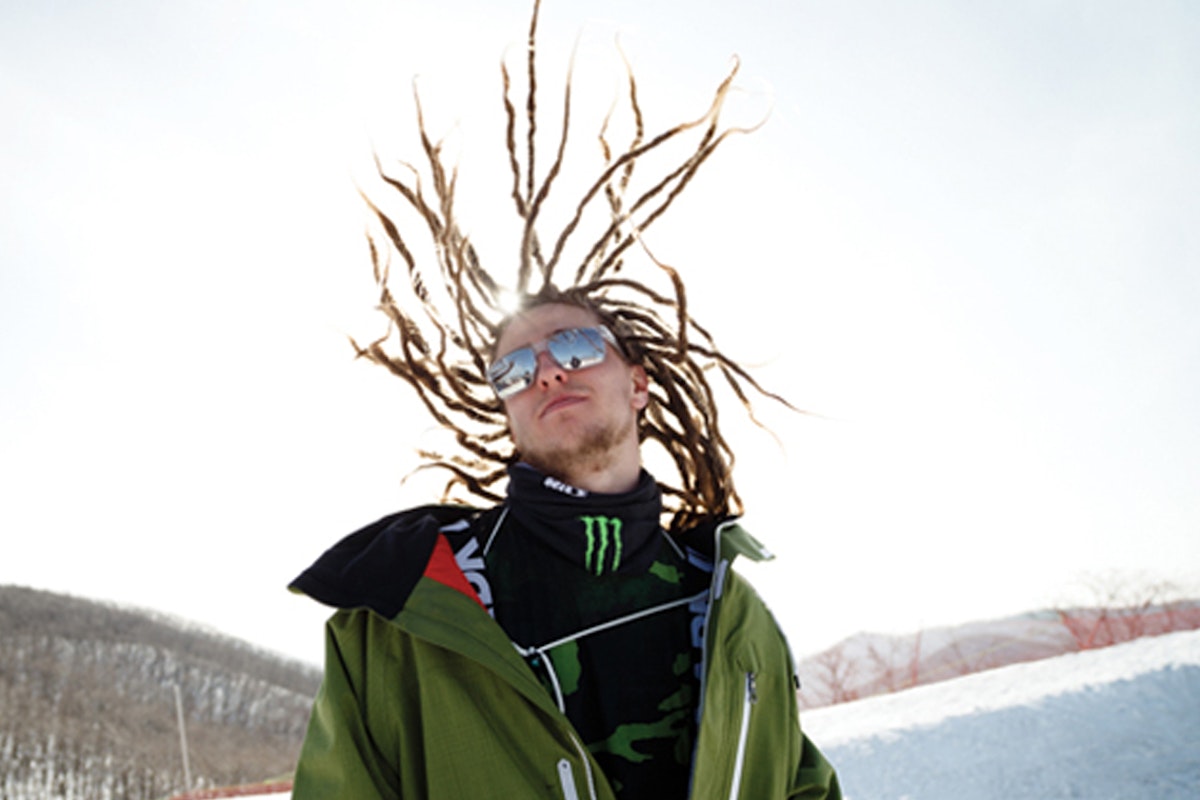

![[GIVEAWAY] Win a 4-Night Karma Campervan Rental and go Ski the Powder Highway](https://www.datocms-assets.com/163516/1767816935-copy-of-dji_0608-1.jpg?w=200&h=200&fit=crop)


![[GIVEAWAY] Win a Legendary Ski Trip with Icelantic's Road to the Rocks](https://www.datocms-assets.com/163516/1765233064-r2r26_freeskier_leaderboard1.jpg?auto=format&w=400&h=300&fit=crop&crop=faces,entropy)
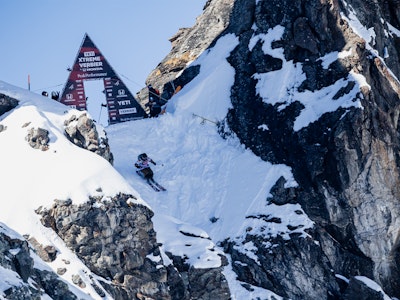
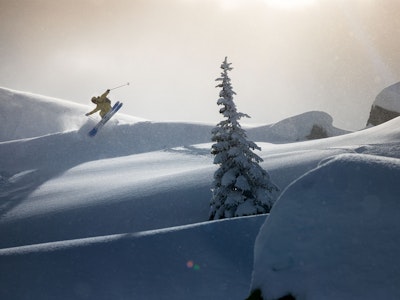


![[GIVEAWAY] Win a 4-Night Karma Campervan Rental and go Ski the Powder Highway](https://www.datocms-assets.com/163516/1767816935-copy-of-dji_0608-1.jpg?auto=format&w=400&h=300&fit=crop&crop=faces,entropy)

